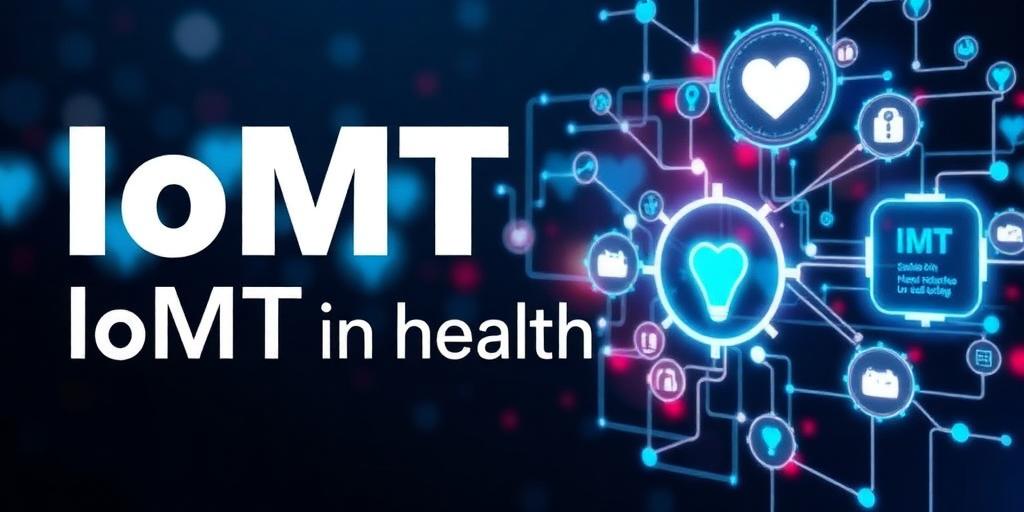The Internet of Medical Things (IoMT): Connecting Healthcare in 2025 (India & World)
The Internet of Medical Things (IoMT) is revolutionizing healthcare, connecting medical devices, systems, and people to improve patient care, streamline operations, and reduce costs. By 2025, IoMT is poised to become even more integral to global healthcare systems, especially in regions like India where healthcare accessibility and affordability are critical.
What is the Internet of Medical Things (IoMT)?
IoMT refers to the ecosystem of connected medical devices and applications that collect, analyze, and transmit health data. These devices range from wearable sensors and remote monitoring tools to sophisticated imaging systems and surgical robots. The data generated is used to enhance diagnostics, personalize treatment, and enable proactive healthcare management.
Key Applications of IoMT
- Remote Patient Monitoring: Wearable sensors and connected devices allow healthcare providers to monitor patients’ vital signs and health conditions remotely. This is particularly beneficial for managing chronic diseases, reducing hospital readmissions, and providing care to patients in rural or underserved areas.
- Smart Hospitals: IoMT enables the creation of smart hospitals with connected equipment, automated workflows, and real-time data analytics. This improves operational efficiency, optimizes resource allocation, and enhances patient safety.
- Medication Management: Connected devices and apps help patients manage their medications effectively by providing reminders, tracking adherence, and monitoring potential side effects. This reduces medication errors and improves treatment outcomes.
- Diagnostic and Imaging: IoMT-enabled diagnostic tools and imaging systems provide faster and more accurate diagnoses. AI-powered image analysis algorithms can detect anomalies and assist radiologists in making informed decisions.
- Surgical Robotics: Robotic surgery systems enhance precision, minimize invasiveness, and reduce recovery times. IoMT enables surgeons to perform complex procedures remotely, expanding access to specialized care.
IoMT in India: Addressing Healthcare Challenges
India faces unique healthcare challenges, including a large and diverse population, limited healthcare infrastructure, and a shortage of healthcare professionals. IoMT offers a promising solution to bridge these gaps and improve healthcare delivery across the country.
- Improving Access to Care: Remote patient monitoring and telemedicine solutions can extend healthcare services to rural and remote areas, where access to doctors and hospitals is limited.
- Reducing Healthcare Costs: IoMT can help reduce healthcare costs by preventing hospital readmissions, optimizing resource allocation, and improving efficiency in healthcare operations.
- Enhancing Disease Management: Connected devices and data analytics can enable early detection and management of chronic diseases such as diabetes, hypertension, and heart disease.
- Empowering Patients: IoMT empowers patients to take control of their health by providing them with real-time data, personalized insights, and tools for self-management.
The Global IoMT Market: Growth and Trends
The global IoMT market is experiencing rapid growth, driven by increasing demand for remote patient monitoring, rising adoption of connected devices, and advancements in data analytics and AI. According to market research reports, the global IoMT market is projected to reach billions of dollars by 2025, with significant growth opportunities in emerging markets like India.
Challenges and Opportunities
While IoMT offers numerous benefits, it also presents several challenges that need to be addressed:
- Data Security and Privacy: Protecting sensitive patient data is crucial. Robust security measures and compliance with data privacy regulations are essential to prevent data breaches and maintain patient trust.
- Interoperability: Ensuring seamless communication and data exchange between different devices and systems is vital for effective IoMT implementation. Standardization and interoperability standards are needed to facilitate data sharing and collaboration.
- Regulatory Framework: Clear regulatory guidelines and standards are needed to ensure the safety, efficacy, and quality of IoMT devices and applications.
- Infrastructure and Connectivity: Reliable internet connectivity and robust infrastructure are essential for the seamless operation of IoMT devices and systems, particularly in remote and underserved areas.
The Future of IoMT
By 2025, IoMT will play an even more significant role in transforming healthcare globally. Advancements in AI, 5G technology, and edge computing will further enhance the capabilities of IoMT devices and applications, enabling more personalized, proactive, and efficient healthcare delivery. IoMT will empower patients, improve healthcare outcomes, and drive innovation in the healthcare industry, both in India and worldwide.
Conclusion
The Internet of Medical Things holds immense potential to revolutionize healthcare by connecting devices, systems, and people. As we move closer to 2025, IoMT will play a pivotal role in addressing healthcare challenges, improving patient care, and driving innovation in the healthcare industry worldwide, particularly in regions like India. Overcoming the challenges related to data security, interoperability, and regulatory frameworks will be crucial to unlocking the full potential of IoMT and realizing its vision of a connected and patient-centric healthcare ecosystem.
